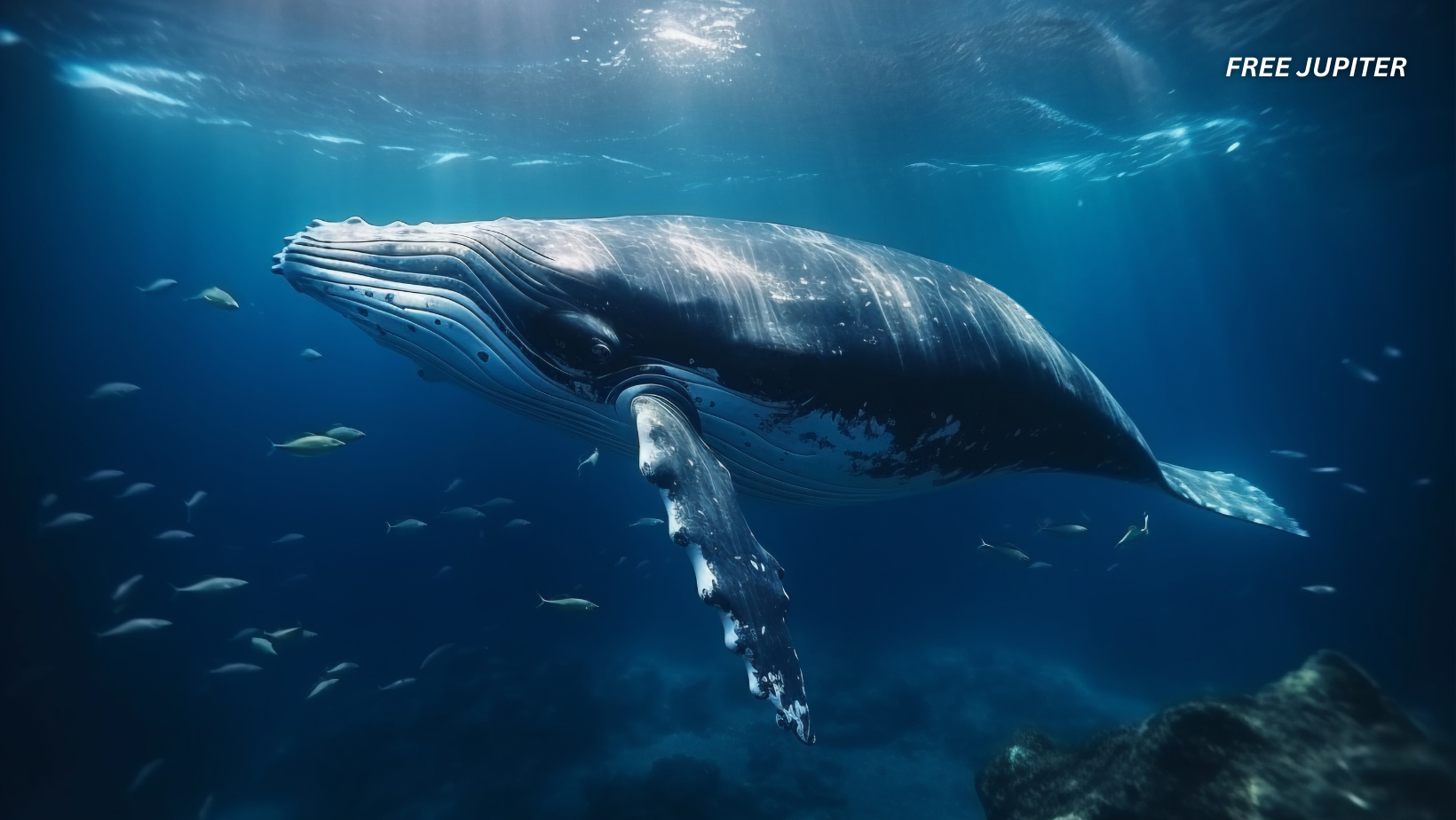Friendly Note: FreeJupiter.com shares general info for curious minds 🌟 Please fact-check all claims—and always check health matters with a professional 💙
The ocean is often described as a stage where survival is the main act. Every day, predators and prey engage in dramatic chases, ambushes, and escapes. Killer whales, or orcas, usually dominate this theater—they are apex predators with few rivals. Yet, in recent decades, scientists have observed a surprising twist in the script: humpback whales storming into orca hunts, disrupting the action in ways that leave researchers both baffled and fascinated.
These interventions are not isolated incidents. A study analyzing 115 documented encounters revealed that humpbacks interfered in orca hunts about 90 percent of the time. Even more intriguing is that these rescues weren’t always about saving other humpbacks. Orca targets ranged from seals and sea lions to gray whale calves and even enormous sunfish, and humpbacks still intervened.
In some cases, these giants charged through the water like battering rams, trumpeted loud warning calls, and placed their massive bodies between predator and prey. There are even reports of humpbacks lifting a frightened animal on their bellies or fins, as if shielding it from harm. Strikingly, once the danger passed, the humpbacks did not stay to benefit from the chaos. They didn’t feed on leftovers, claim territory, or gain any clear advantage—they simply swam away.
Why would a 40-ton whale risk injury or worse to protect creatures that aren’t even their own species? Scientists don’t have a definitive answer, but several intriguing theories attempt to explain the mystery.
1. Protecting Their Own Young
The simplest explanation begins with survival. Orcas are known to hunt humpback calves, especially when they are young and vulnerable. By charging at orcas whenever they sense danger, humpbacks might be acting from a general rule: better to chase away potential threats than wait until it’s too late.
This idea makes sense when you consider how protective humpback mothers are. Calves spend their first year closely attached to their mothers, relying on them not only for nourishment but also for protection. Orcas, hunting in coordinated pods, are formidable opponents. By adopting an “attack first, ask questions later” approach, humpbacks may reduce the risk of losing their young.
Read more: Blue Whale Songs Have Dropped 40%—Scientists Fear It’s a Warning Sign
2. Mistaking Others for Calves
Not every rescue mission is necessarily deliberate. When seals, sea lions, or other marine animals cry out under attack, their distress calls might sound uncannily similar to the cries of a humpback calf. Since humpbacks are highly sensitive to sound—they rely on songs and calls to communicate across vast distances—they could be misinterpreting these cries as a signal from one of their own.
This could explain why humpbacks sometimes rush in even when the orcas are targeting species far different from themselves. If their instincts tell them “calf in danger,” they may act first and figure out the details later.
3. A Broader Protective Instinct
But what if it isn’t a mistake? Some scientists believe that humpbacks may have a protective instinct that extends beyond their own kind. Observations suggest they have intervened not only for whales, but also for seals, sea lions, and even fish. This has led to the bold suggestion that humpbacks might display something unusual in the animal kingdom: a generalized drive to protect weaker creatures.
It’s not proof of empathy in the human sense, but it hints at a deeper complexity in whale behavior—one that challenges our assumptions about how animals perceive suffering and danger.
4. Practicing Their Defense Skills
Another possibility is that these rescue missions are not entirely about the victims at all. By interfering with orca hunts, humpbacks may be “practicing” defensive strategies. Just as young lions hone hunting skills by chasing smaller prey, humpbacks might be sharpening their ability to face threats.
A confrontation with orcas is always risky, but practice could make them more prepared when their own calves face real danger. These rehearsals might help them refine group tactics, coordinate better with other humpbacks, and test the effectiveness of their size and strength against skilled predators.
5. Disrupting the Orca Playbook
On a strategic level, humpbacks may gain an indirect advantage by repeatedly ruining orca hunts. If orcas associate certain areas with interference, they may avoid those hunting grounds in the future. This could push orca pods to relocate, leaving humpbacks and their calves in relative peace.
In other words, while it may look like altruism on the surface, it might also be a clever way to reduce long-term risk. By consistently making life harder for orcas, humpbacks could be tipping the balance in their own favor.
6. The Power of Social Bonds
Humpbacks are social, and their lives are not lived in isolation. While they don’t form permanent pods like orcas, they often travel in loose groups, particularly during migrations. This social nature may play a role in why they act together during these interventions.
It’s possible that cooperation is part of their survival toolkit. By standing together, humpbacks amplify their defensive capabilities. The willingness to risk danger might be strengthened by a sense of shared responsibility within the group.
Read more: Recordings Showing Orcas Mimicking Human Speech is Freaking Listeners Out
7. An Ancient Rivalry in Motion
Humpbacks and orcas have shared the seas for millions of years. Their evolutionary histories are intertwined, and their confrontations may be part of an age-old struggle. Some researchers speculate that humpbacks may be genetically predisposed to confront orcas, their instincts shaped by countless generations of conflict.
In this sense, every modern encounter is part of a much longer story—an ancient rivalry playing out again and again in the deep.
8. A Mystery That Defies Logic
Despite all these theories, the truth remains elusive. Perhaps humpbacks act on instincts humans cannot yet measure, or perhaps their motives are a blend of survival, intelligence, and something closer to emotion. The ocean is full of mysteries, and this one continues to challenge our understanding of animal behavior.
Famous Rescue Encounters
To make the mystery even more compelling, there are well-documented examples that read almost like dramatic rescues out of a storybook. In 2009, off the coast of California, researchers observed humpbacks rushing to defend a gray whale calf under attack by orcas. Despite their efforts, the calf was killed, but the humpbacks continued to circle and charge the orcas long after the battle ended, as if unwilling to accept defeat.
In another case, a humpback appeared to “push” a seal out of the water, balancing it on its belly to keep it safe from orcas circling below. The seal eventually escaped to safety, leaving researchers stunned at the apparent intentionality of the act.
Read more: Killer Whales Are Getting Smarter—And Their Behavior Is Becoming More Alarming
Final Thought
In the brutal world of ocean survival, humpback whales play a role no one expected: guardians of the vulnerable. Whether they are motivated by instinct, strategy, or something resembling compassion, their actions remind us that the natural world often resists simple explanations.
These massive creatures, known for their haunting songs and graceful breaches, continue to baffle scientists by standing against one of the ocean’s fiercest predators. And perhaps that is what makes the mystery so captivating: in a place where life and death are often decided by strength and speed, humpbacks may be showing that survival is not always about self-interest—it can sometimes be about protection.










